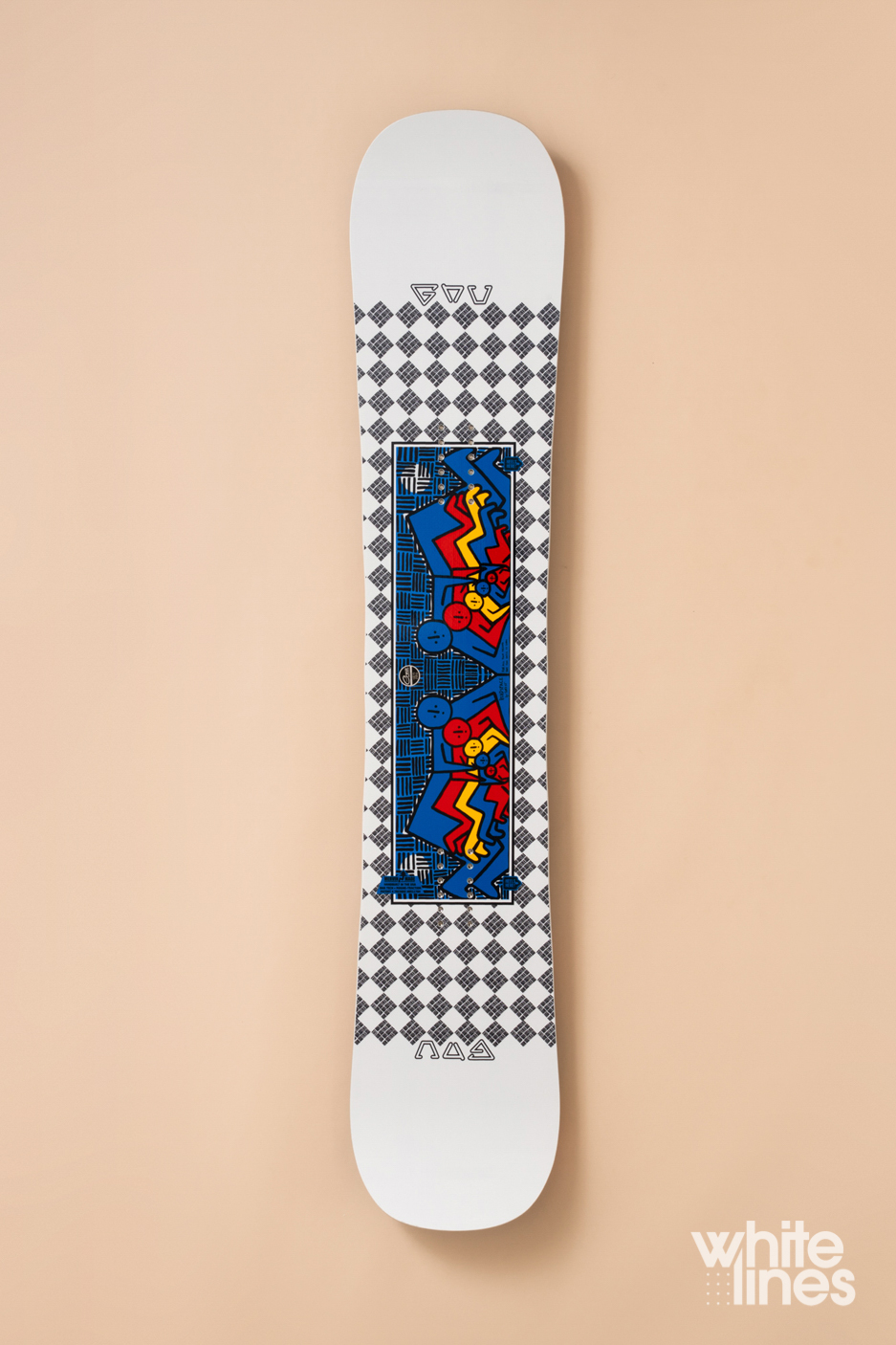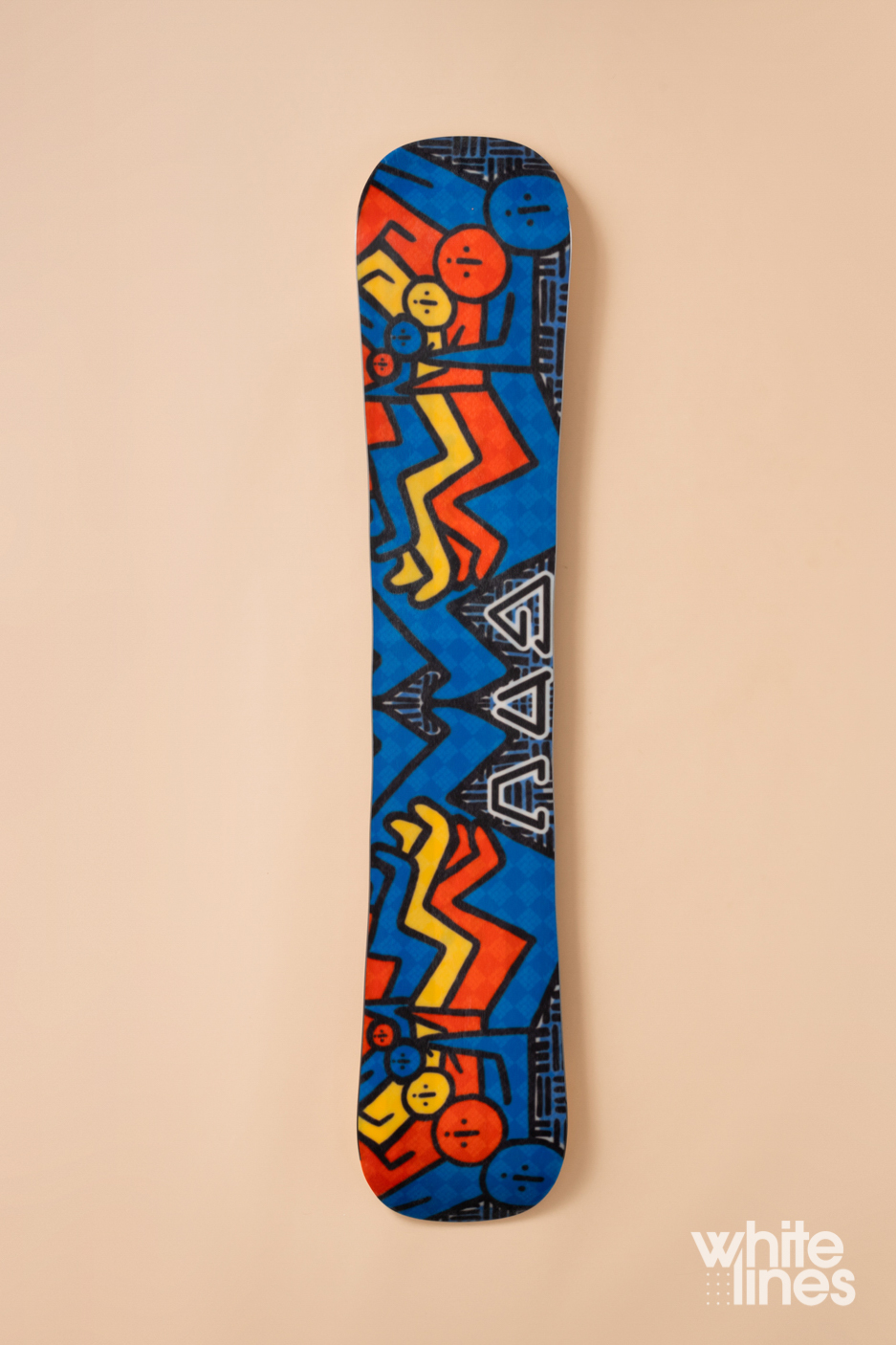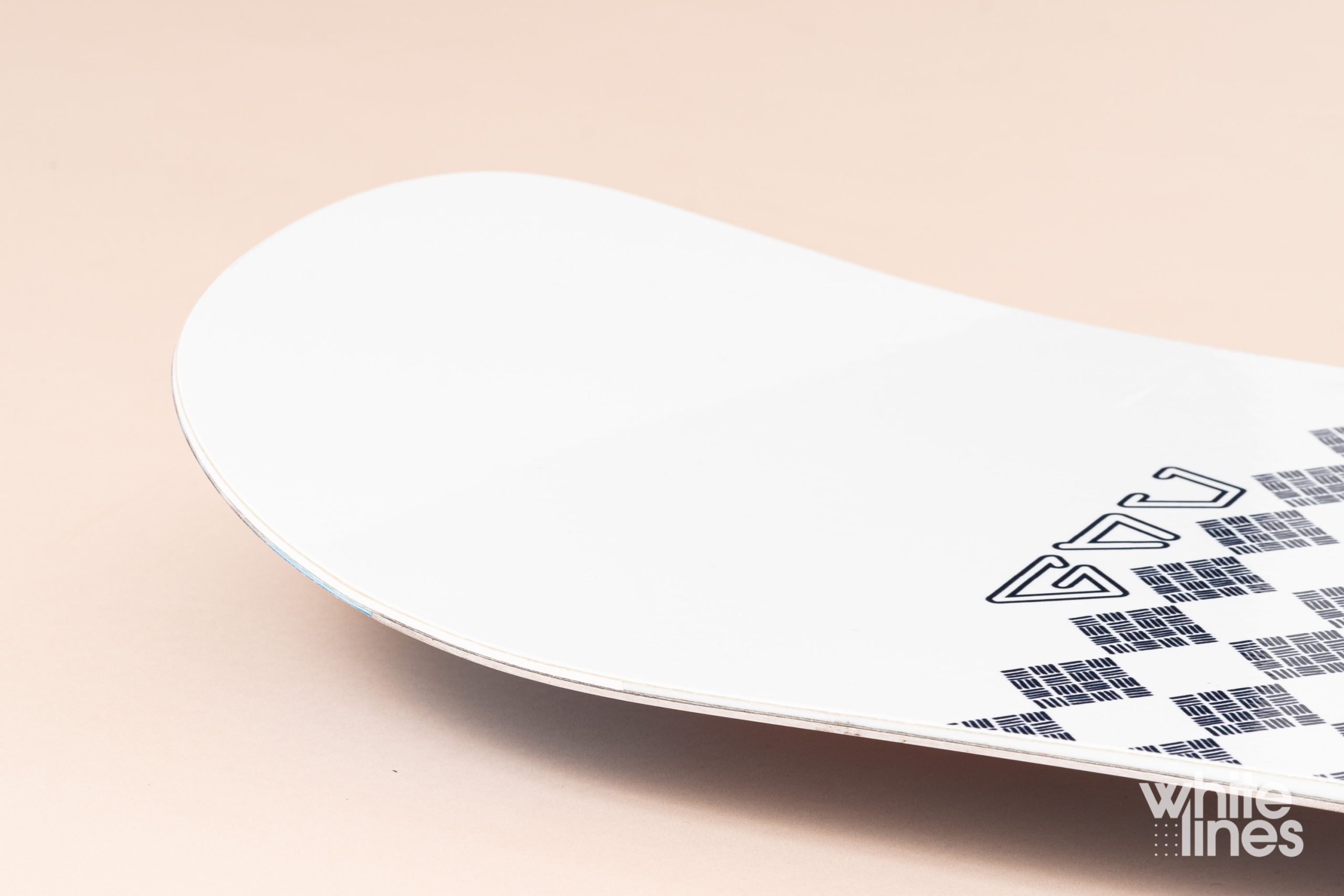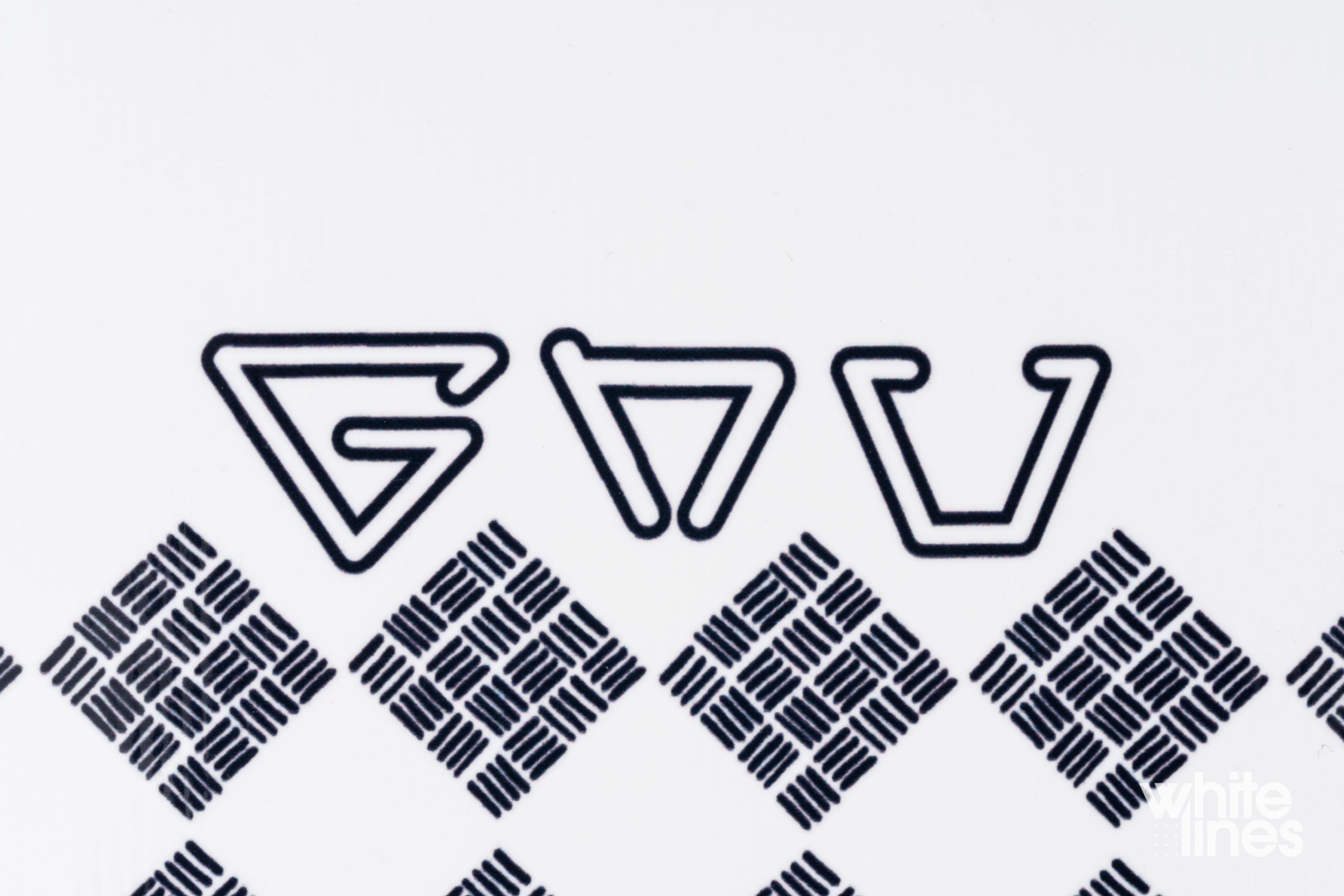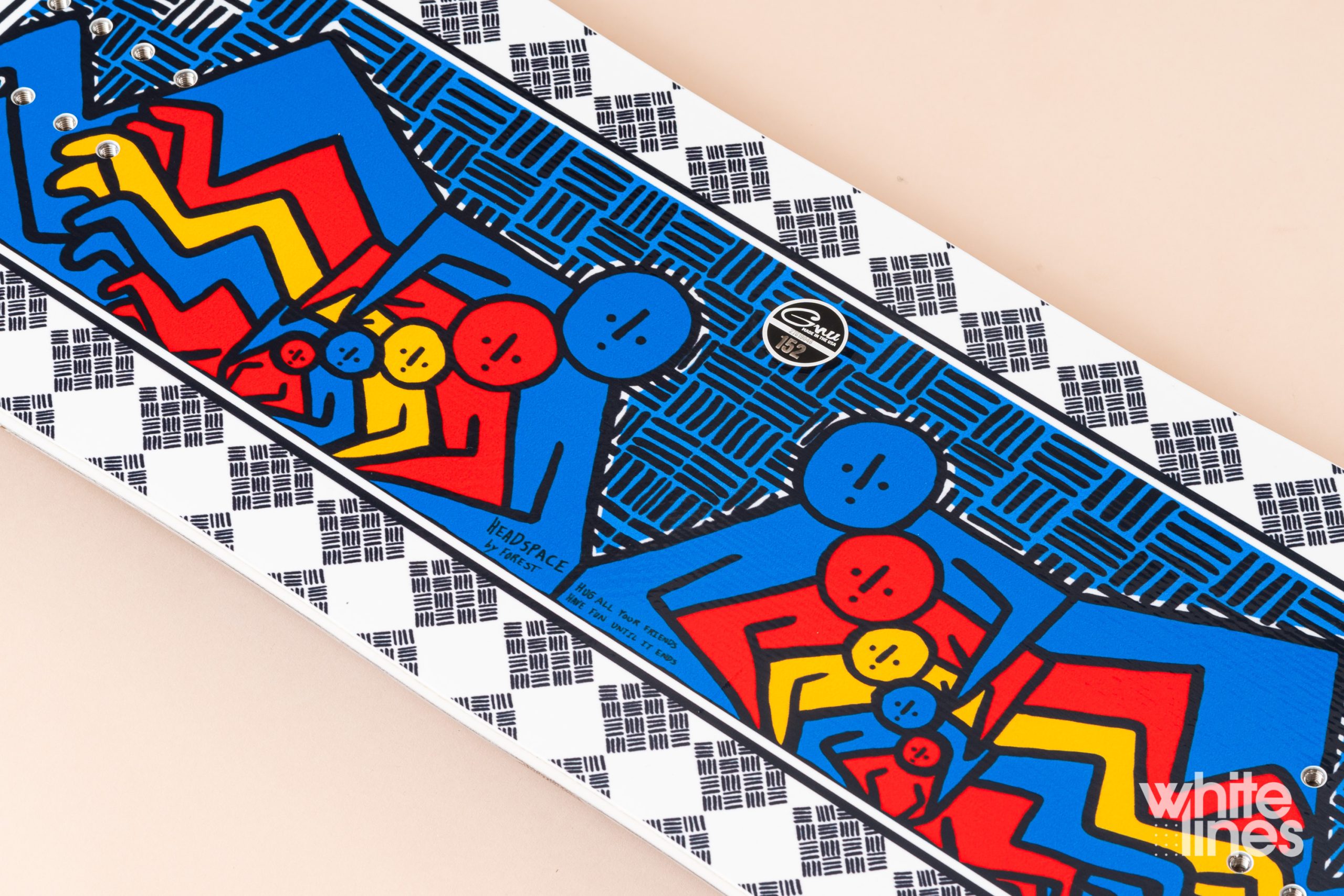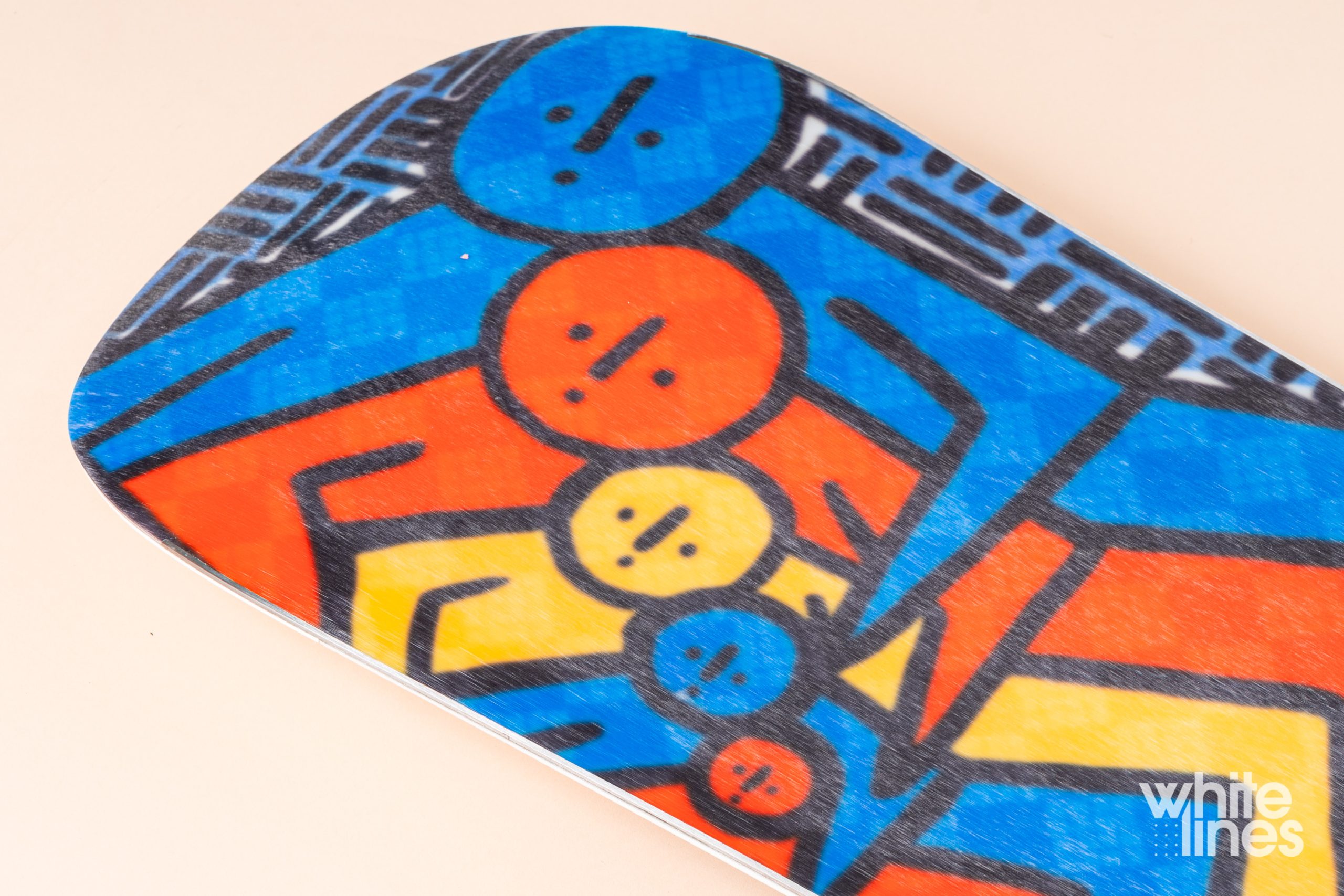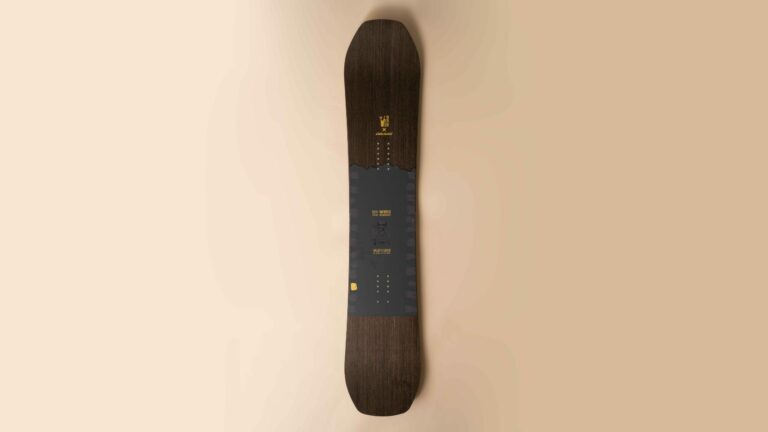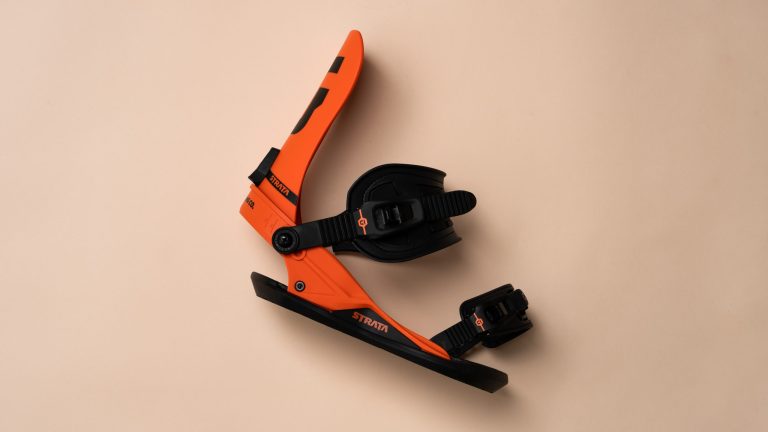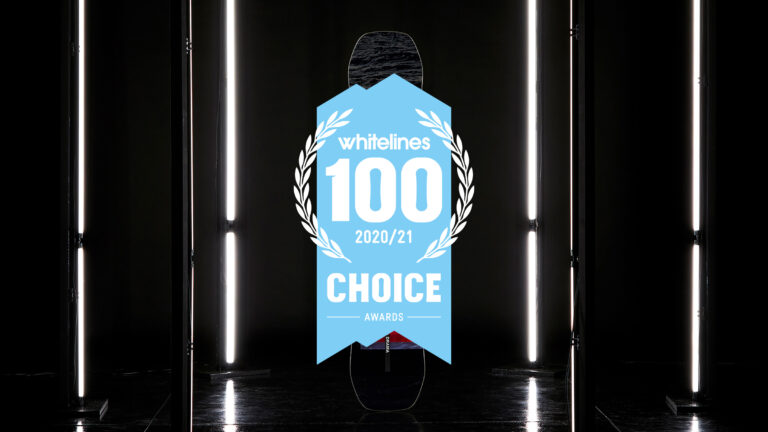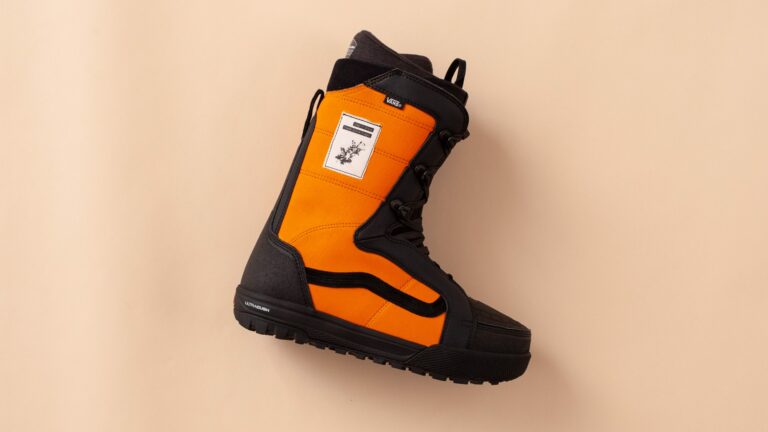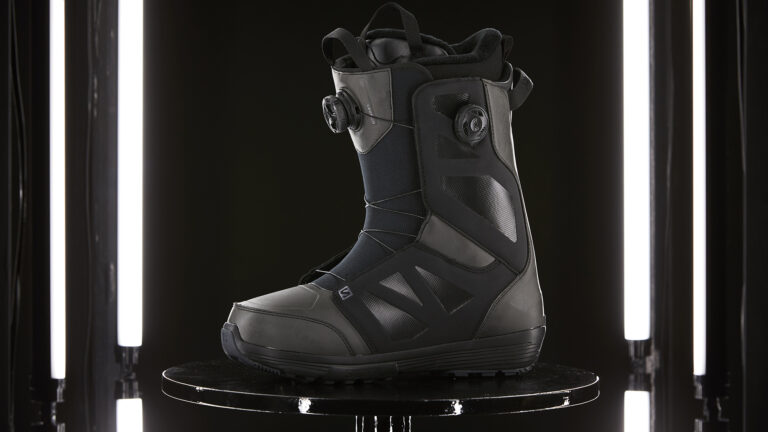- Price: £445 / $500
- Category: Park/Jib, All-Mountain
- Ability Level: Intermediate, Advanced
- Size: 149, 152, 152W, 155, 155W, 158
- Flex: 4.5-6/10
- Shape: Asym Twin
- Profile: Hybrid
- Base: Sintered
The Head Space has the fingerprints of GNU team stalwart Forrest Bailey all over it. From the artwork on the top sheet to the tech chosen to go in it, Bailey has created a freestyle snowboard that reflects his riding style and personality.
Assuming we don’t just buy our snowboards for the topsheet (come on now, be honest), one of the most notable strings to the Head Case’s bow is hidden away in its asymmetric sidecut. This simple but effective design is compensates for for the biomechanical inefficiencies of turning on the heelside edge by shortening the sidecut radius on that side to deliver perfectly even and flowing carves whichever way you’re leaning.
“They even use renewable energy to power the factory they’re made in, putting them in Greta’s good books”
Granted, other than setting up for a FS spin, the merits of this won’t be massively felt in the park. Get it trench digging on the morning groomers, however, and you’ll see where this freestyle focussed board picks up a great big barreload of all-mountain versatility. The same goes for the Magne Traction edges that give you increased grip on even the iciest end of day home run sidehits.
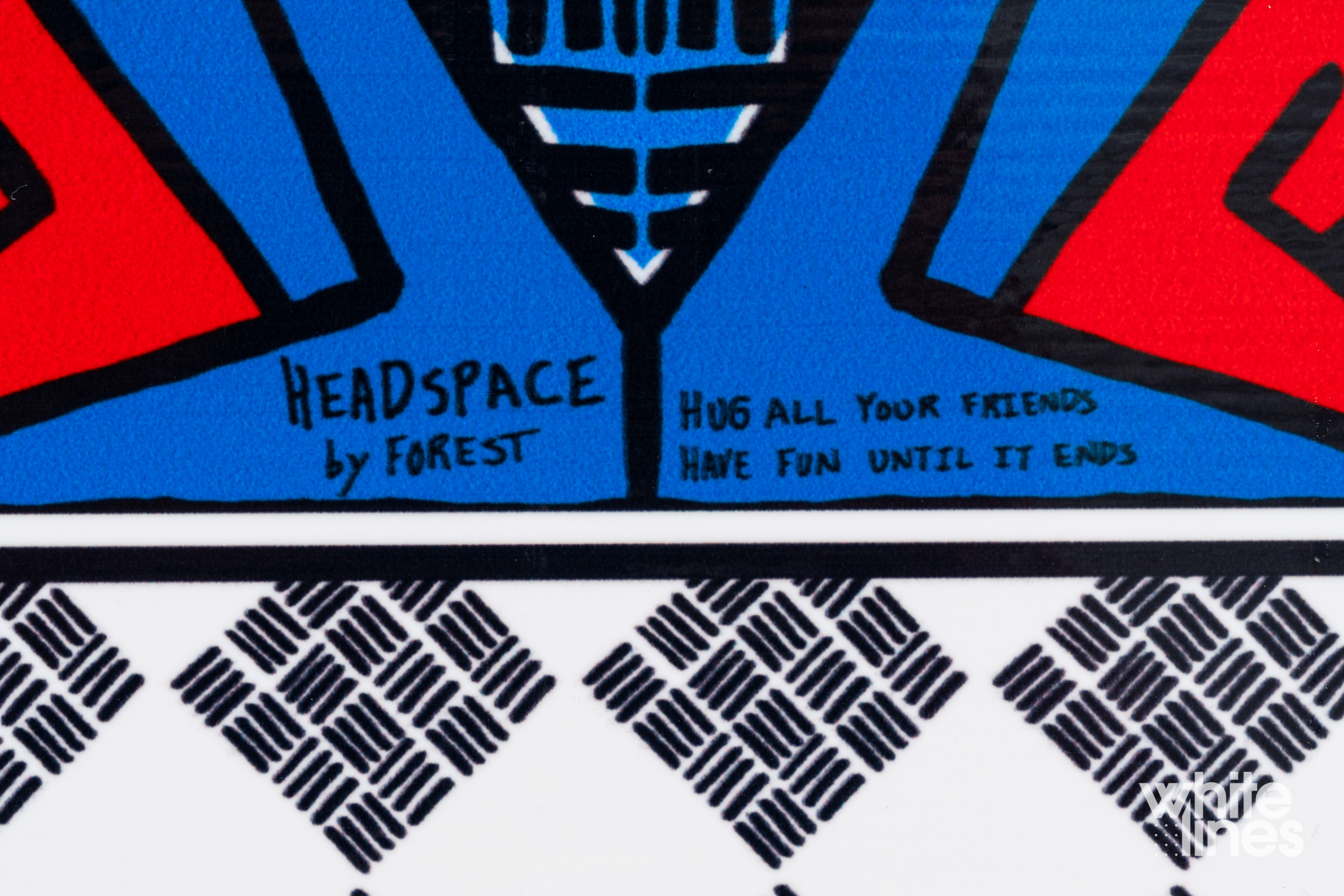
The C3 camber profile gives the Head Space a bit of extra pop and hold compared with the rocker dominant profiles that can sometimes feel a bit washy on harder snow. There’s traditional camber running for the full length of the snowboard with a touch of rocker at the midpoint of the profile. The flipside to more grip is that you loose some forgiveness, which is why the Head Space is aimed at more experienced freestyle riders, ones who want the reassurance of precision on big take-offs and landings.
GNU have also made some environmentally focused design decisions across their rage and for the Head Space that involves using eco-friendly processes to bond the tri-ax and bi-ax laminates to the paulownia and aspen wood core and sintered base. They even use renewable energy to power the factory they’re made in, putting them in Greta’s good books.


